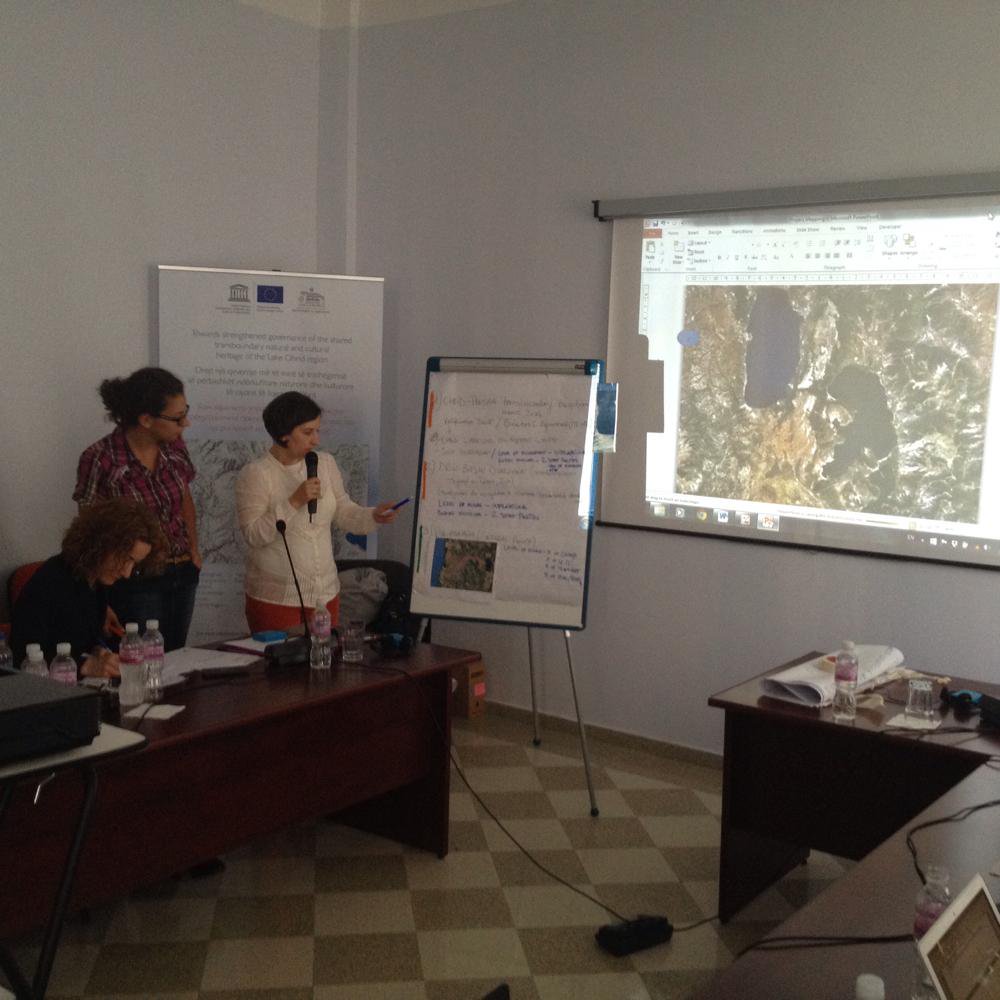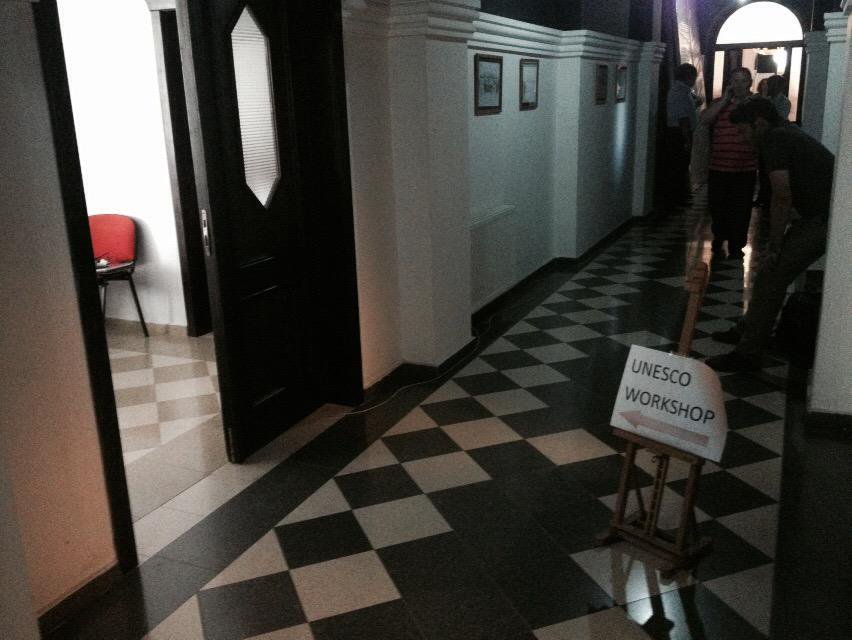Sharing and caring for heritage around Lake Ohrid
A report on a unique EU funded, UNESCO World Heritage Centre coordinated, project supporting mixed heritage in the Central Balkans 2014-2017.
The dramatic landscapes around Lake Ohrid, which form the borderlands between Albania and the former Yugoslav Republic of Macedonia, have long been recognized as holding unique values, both in terms of cultural and natural heritage. Archaeological research has uncovered evidence of layers of human settlement in the region dating back to more than five thousand years. But the Lake’s history stretches deep in to geological time. It is estimated that this freshwater basin has been continuously present for some 2-3 million years, making it amongst the oldest in Europe and one of only a few examples globally that qualify as being termed ‘ancient lakes’. That long isolation from other water sources, has produced a priceless array of endemic biodiversity.
It should come as no surprise therefore, that back in 1979 Lake Ohrid was designated a UNESCO world heritage site, first for its natural qualities and then a year later for its cultural values. However, the geological tectonic forces that created the basin area, were mirrored by political rifts that meant only the Macedonian part of the lake was originally designated as world heritage.
Fortunately the lake has outlasted those political times and the present cordial climate has allowed at last for joint and coordinated efforts between the two countries – which are universally viewed as being crucial to ensure the safeguarding of the rich heritage of the Lake Ohrid region.
Central amongst the initiatives that have now emerged to support both countries in their efforts to protect the area, is the project “Towards strengthened governance of the shared transboundary natural and cultural heritage of the Lake Ohrid region”. This pioneering effort, is amongst a small number of pilot projects that are testing what UNESCO has labeled ‘The Upstream Process’. This is an experimental approach targeted at easing the problems that properties experience during the often challenging process of nomination for inscription on the World Heritage List.
With Lake Ohrid coming both under mixed cultural and natural world heritage criteria and now seeking to cover a trans-boundary area, the complexity of the project is indeed a substantial challenge that requires the pooling of a wide range of organizations, skills and resources. Within that grouping, Touch TD have been invited by UNESCO advisory body and project partner, ICOMOS, to provide specialist expertise in the area of sustainable tourism development and cultural heritage. This is with the aim of supporting a number of capacity building and promotional activities, as well as coordinate the drafting of a strategy that identifies the main sustainable developmental opportunities in the Lake Ohrid region.
Furthermore, our experience in drawing from an anthropological perspective when engaging with diverse stakeholders and community groups, is particularly valuable in contributing towards the participatory process that is being applied across the project.
The outcome sought is a sustainably embedded process that will lead to the preparation of a dossier by the Albanian authorities to extend the World Heritage property to the Albanian part of the Lake Ohrid region. With a delicate balancing act between conservation and development required, the approach this project views as being most critical, is providing opportunities to accommodate as many voices and perspectives as possible. In so doing when decisions are made, they are set against a backdrop of as wide a consensus and understanding as possible.
Keep an eye out on our website and Twitter (@TouchTD) for more updates on this exciting and unique project.



